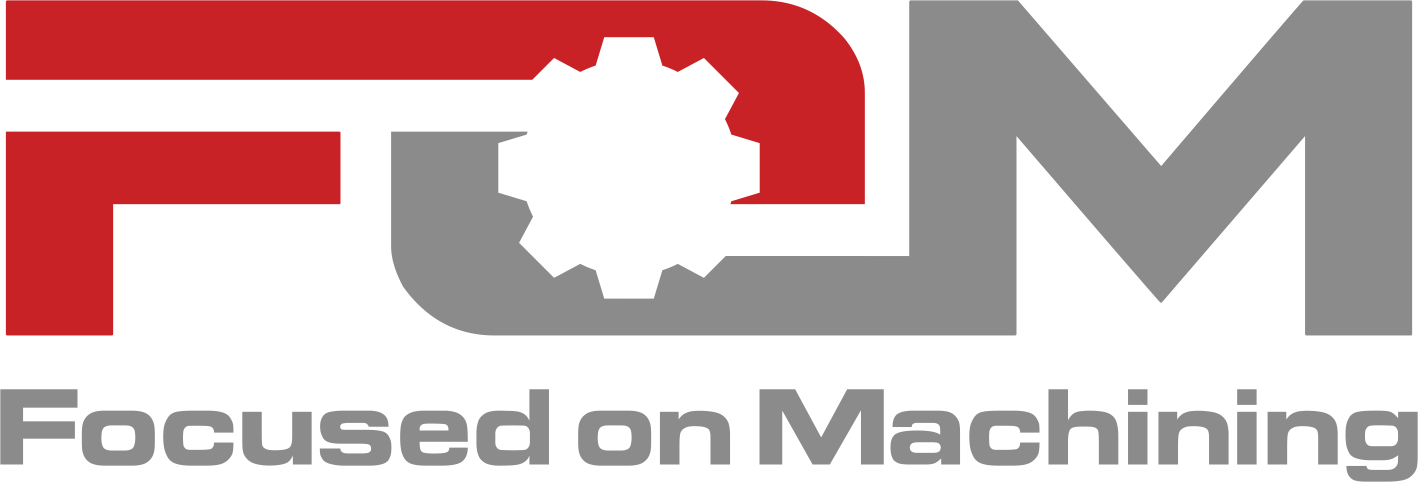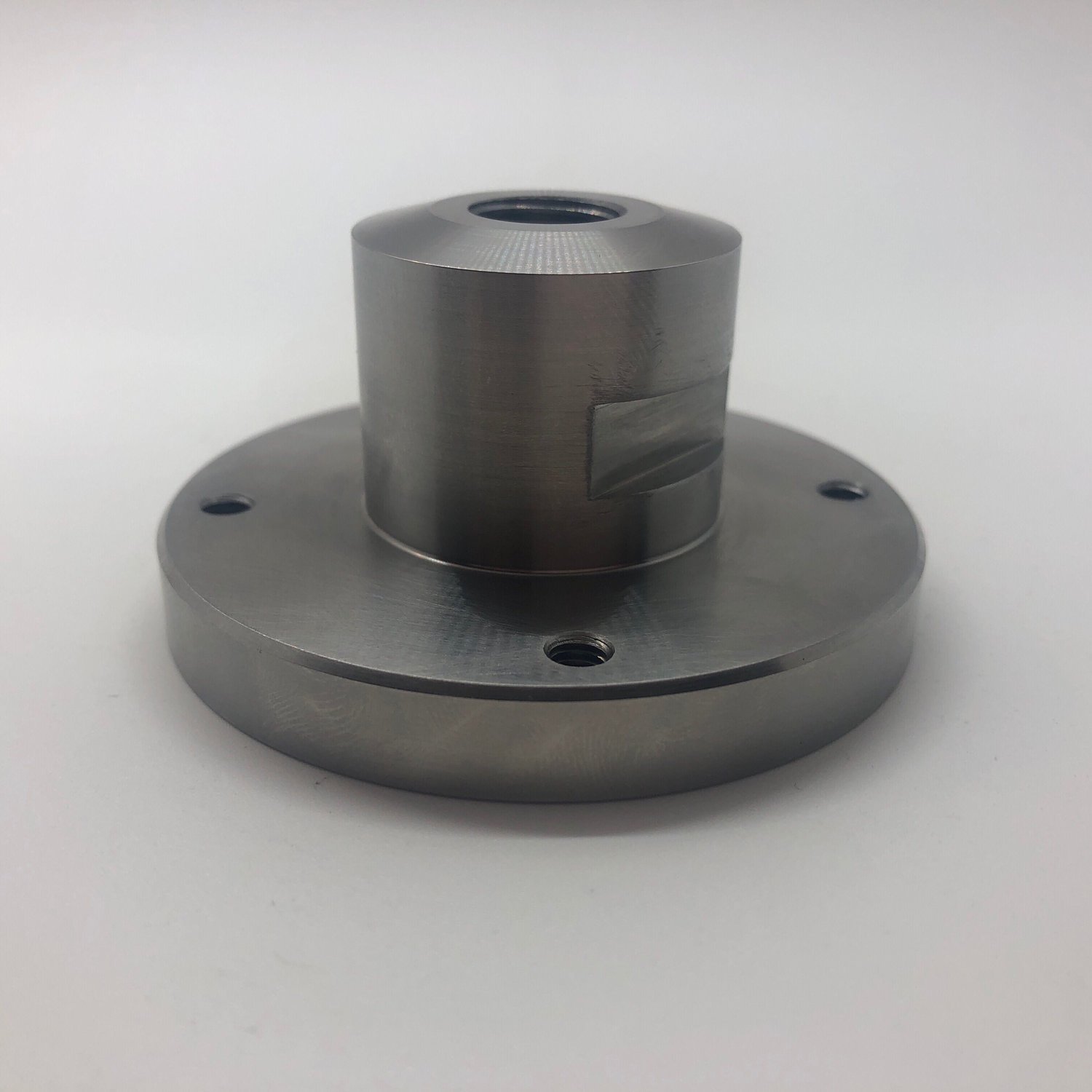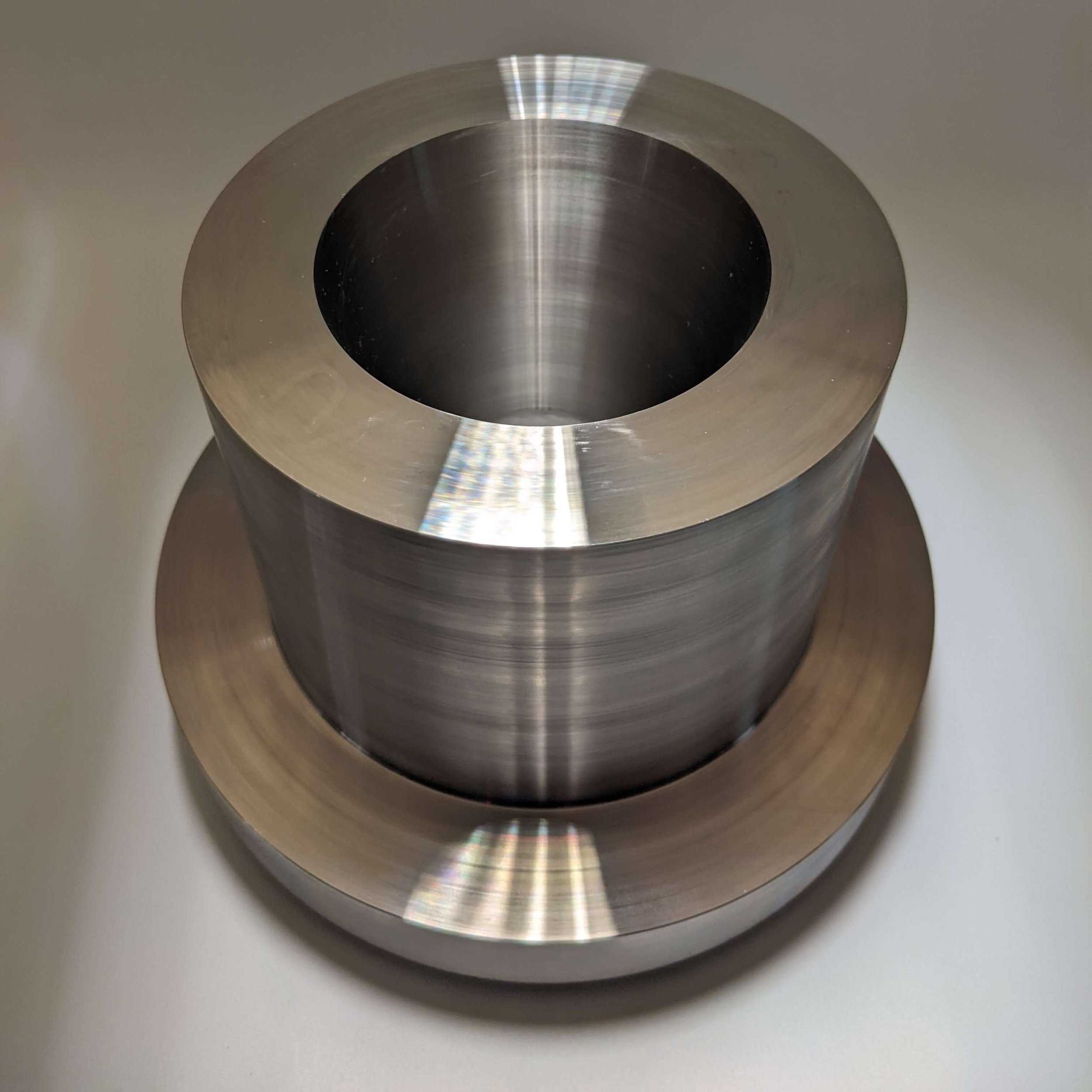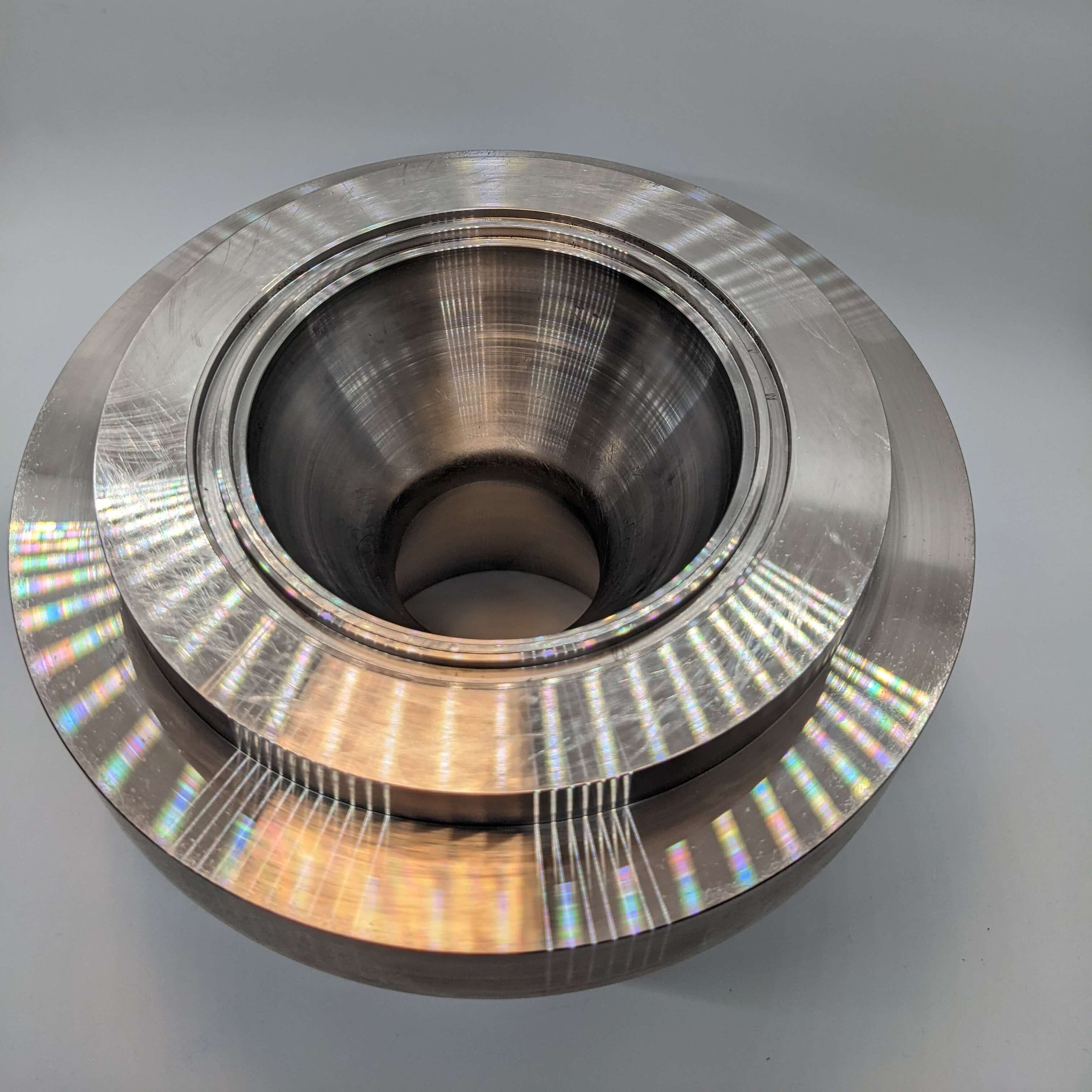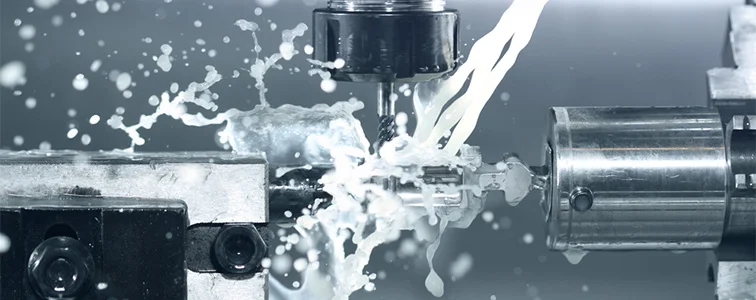
BLOG
The Risk of Outsourcing Precision Machined Parts to an Unknown Shop
In an attempt to save money, one of our OEM customers recently ordered 5 complex gear housings from an on-demand parts marketplace. They planned to have the parts shipped to Focused on Machining for assembly. There was just one problem: the housings we received from the budget marketplace arrived with serious quality and accuracy issues. The threaded holes hadn’t been deburred, and the press-fit holes were too small for the hardware.
In an attempt to save money, one of our OEM customers recently ordered 5 complex gear housings from an on-demand parts marketplace. They planned to have the parts shipped to Focused on Machining for assembly.
There was just one problem: the housings we received from the budget marketplace arrived with serious quality and accuracy issues. The threaded holes hadn’t been deburred, and the press-fit holes were too small for the hardware.
Upon assessing the parts, it became clear that the cost of fixing these low-quality housings was greater than the cost of starting over from scratch and machining them ourselves.
We were happy to work with this customer to solve a problem that another shop had created. And thankfully, they came away from the experience with a clearer understanding of something that most precision machine shops know to be true: it’s risky to outsource parts to an unknown shop.
The Problem with On-Demand Parts Marketplaces
We’ve all heard the adage that if something seems too good to be true, it probably is. In the precision machining world, “too good to be true” can look like an on-demand parts marketplace offering customers the chance to source inexpensive parts online with the click of a button.
These budget marketplaces connect customers with a network of manufacturing suppliers worldwide with excess production capacity. And while it may seem incredibly convenient to submit a quote for a part and let someone else take it from there—getting you the parts you need at a low price—the fact is that each transaction is a gamble.
Because the downside of being hands-off is that you have no idea who is making your parts. The unknown shop might knock your project out of the park—or they might not. And if they don’t, you’ll be stuck picking up the pieces (sometimes literally).
Thinking beyond the Lowest Price
Here’s the truth: sometimes, using an on-demand parts marketplace really is the best option. If you need a simple part, like a bracket, you can be confident that just about any precision machine shop in a marketplace’s network will get the job done right. You’ll save money while enjoying a relatively seamless experience.
But when it comes to sourcing complex parts, price should not be the primary factor influencing your decisions. Our customer learned this lesson the hard way. Their gear housings posed precision machining challenges that the unknown shop who built their parts couldn’t overcome: tight tolerances, expensive material, gold plating, and tapped holes for 50+ pieces of hardware.
The fact that these parts would eventually be assembled added another layer of complexity because they needed to fit together perfectly. (Tip: It’s always best to have the same shop machine and assemble your parts so that they can proactively address any issues before assembly begins and so that they assume responsibility for the entirety of the project.)
Our customer knew from the start that they needed a reliable precision machine shop like Focused on Machining with the careful assembly work for their parts. In trying to cut costs on the initial precision machining work, they wound up shelling out more money in the long run.
The moral of the story? It pays to work with a shop you know and trust.
How to Manage Outside Processes for Precision Machining
We pride ourselves on being the precision machine shop customers can turn to for their most complex parts, consistently achieving tight tolerance requirements and mastering challenging features and materials that other shops don’t want anything to do with.
We pride ourselves on being the precision machine shop customers can turn to for their most complex parts, consistently achieving tight tolerance requirements and mastering challenging features and materials that other shops don’t want anything to do with.
Our appetite for complexity even extends to parts that are considered difficult from a supply chain perspective: parts with complex features that also require complex outside processes like metal finishing.
We have a proven approach to project managing these processes, and it works wonders for everyone involved—from the metal finishers plating the machined parts we send their way to our customers who receive the final parts made to their most precise specifications.
Why Shops No-Quote Parts with Complex Outside Processes
If you’ve had difficulty finding precision machine shops that will quote complex parts requiring complex outside processes, it’s because the stakes are high on these jobs. Most shops aren’t willing to assume that much risk.
Machining a part with intricate features and tight tolerances is challenging enough. Getting that part plated accurately without compromising those intricate features and tight tolerances is—at best—a massive headache and—at worst—a costly nightmare. Shops have very little control over what goes on at a plating house, and the consequences can be dire.
Consider this: if a plating house scraps a part in the anodizing tank, they’ll credit the machine shop that sent them the part a mere $80 lot charge for what could be a $20,000 part. That’s a major loss that most shops aren’t willing to gamble on. Even if the plating house doesn’t scrap the part, there’s no guarantee they’ll mask all the right holes or adequately accommodate for critical features and surfaces.
None of this is necessarily the plater’s fault. They’re excellent at what they do. They just don’t have the same in-depth understanding of tolerances, features, and surfaces as machinists. So we developed a set of best practices to set them (and us. . . and our customers) up for success.
How We Project Manage Your Precision Machined Parts
At Focused on Machining, we’re willing to take on the risk of sending complex parts out for complex outside processes because we’ve put in the work to feel confident that we’ll get the parts right.
In fact, our commitment to machining port parts that other precision machine shops regularly no-quote is what inspired us to develop a better approach to facilitating outside processes. Port surfaces are critical, and it’s important to have them masked well during plating so that they’re not exposed to the treatment.
Here are the best practices we employ to manage complex outside processes.
Tiered supply chain
We’ve built a robust network of trusted plating vendors—locally and nationally—and are continuously looking to add excellent new vendors to our list.
But that’s not all. We’ve divided our plating vendors into three tiers, grouping them according to whether we send them our simplest or most complex parts.
The tier three vendors are fast, inexpensive and fully capable of plating a straightforward part in a matter of hours. The tier one vendors are by no means the cheapest or fastest, but we’ve learned from experience that they’re the only ones we can trust with tight tolerances and intricate features. The tier two vendors sit somewhere in the middle.
For each project, we’re committed to matching the part to the right plating vendor.
Customer communication
Engineers are under such pressure to design properly functioning parts that they can fall into the trap of overengineering.
They might design their tolerances unnecessarily tight, make their features overly complex, or even ask for a hard anodized finish when regular anodizing is sufficient. They may also provide questionable masking instructions on their print.
We analyze our customers’ prints before doing any work on their parts and communicate with them proactively to discuss potential issues so that we can deliver a high-quality part at the best price. These conversations are especially critical for parts requiring complex outside processes.
Simple plating instructions
This best practice is perhaps the most effective one of all: we make the plating instructions as simple as possible for the vendor.
Typically, engineers call out plating instructions in the notes section of a print. The problem is that their instructions usually include minimal information and terms the plater may not fully understand. For example, the instructions might say, “Mask all ports.” But if the plater can’t distinguish between a port and a different feature, that’s not very helpful.
At Focused on Machining, we take what is often a complex multi-page print and create our own separate print just for plating. We simplify the information significantly, even color-coding our print for easy interpretation.
Platers appreciate that we set them up for success, and our customers love that they get the complex machined parts they want. It’s a win-win.
The next time you need a complex part requiring complex outside processes, you can trust Focused on Machining to deliver. Request a quote today.
Are Tight Tolerances Driving up the Cost of Your Part?
There’s a saying we have in the precision machining world when discussing tolerances: Every decimal place adds a zero to the price. Manufacturers know that nine times out of 10, tolerancing is what drives up the cost of a part. And yet, time and again, customers submit over-toleranced part designs that are exceptionally difficult to bring to life on the shop floor.
There’s a saying we have in the precision machining world when discussing tolerances:
Every decimal place adds a zero to the price.
Manufacturers know that nine times out of 10, tolerancing is what drives up the cost of a part. And yet, time and again, customers submit over-toleranced part designs that are exceptionally difficult to bring to life on the shop floor.
It’s not their fault. There’s a clear gap between what’s designable and what’s manufacturable. And it’s our job as your precision machining partner to help close that gap so that you get the parts you need quickly and cost-effectively.
The Human Hair Analogy
Have you ever stopped to consider the actual differences between a standard tolerance like +/- 0.005” and a precision tolerance like +/- 0.002” or +/- 0.0005”?
It’s helpful to think about tolerances in terms of human hair. A piece of hair is about 0.003” thick. When you specify a +/- 0.002” tolerance, what you’re asking for is less permitted variance than the width of a human hair. A +/- 0.0003” tolerance is like taking a piece of hair, slicing it into 10 pieces, and having one of those pieces represent the permitted variance.
Don’t get us wrong—some applications require such precision tolerances. As an aerospace machine shop, we’re accustomed to machining tight tolerance parts and possess the skills, experience, and equipment to meet your specifications. We genuinely love challenging parts!
But tight tolerance parts are expensive for customers, adding layers of complexity to the precision machining process. So we always encourage you to consider if a feature really needs that precision tolerance before submitting your design.
Why Tight Tolerance Parts Are So Expensive
Most precision machine shops can achieve a standard +/- 0.005” tolerance easily. Take that tolerance and cut it in half to +/- 0.0025,” and it’s more than twice as hard to machine—it’s exponentially harder.
A top-quality aerospace machine shop like ours can still get the job done without any trouble. Once we have a +/- 0.0025” or +/- 0.002” tolerance programmed into our machine, we can repeat it (although it does take longer to dial in than a standard tolerance). However, when a part requires tolerances down to +/- 0.0005,” we can’t just hit those tolerances and repeat them easily.
Here’s what we’re dealing with:
Tooling wear considerations
We don’t have to worry about tooling wear when machining standard +/- 0.005” tolerances. We can use the same tool for thousands of parts and consistently meet all specifications.
Add a fourth decimal place to that tolerance, and suddenly tooling wear is a critical consideration. Any minor wear on the tool could prevent us from hitting a +/- 0.0005” tolerance, so we have to change the tool out every couple of parts—driving the dollar figure up.
Climate and temperature considerations
Materials change size at different temperature ranges—some more than others. Alloys like Inconel and Monel are minimally affected by temperature fluctuations. On the other end of the spectrum, certain plastics may expand or shrink when exposed to even a 5-degree temperature change. You wouldn’t notice a difference with the naked eye, but the variation could easily compromise precision tolerances.
We must account for potential temperature changes when inspecting tight tolerance parts that come out of a hot machine. If we’re machining a feature with a +/- 0.0005” tolerance and we need to inspect it, it must first sit in our quality control department for up to 1.5 hours just to normalize to temperature before we can get accurate readings.
For a feature with standard tolerances, we might iterate numerous times per day. When dealing with precision tolerances, we can only fit in 1-2 iterations per day due to the time required to perform an accurate inspection. A step that typically takes minutes potentially takes hours or even days—again, driving up the dollar figure.
Want an example of how these considerations play out?
Let’s say we make the first part with tolerances of +/- 0.0005” and go to cut a second part, but the tooling has worn down +/- 0.0005”. Now we need to cut that feature twice as far as we did initially. But to figure that out, we have to cut the part once, take it out, allow it to normalize to temperature, inspect it, realize it’s out of tolerance, put it back in, run another pass. . . you get the idea. That process takes hours!
Don’t Split Hairs over Unnecessarily Tight Tolerances
Keep in mind that precision machine shops quote based on the designs they receive. We’ve worked with many customers who unknowingly over-toleranced their parts, unaware of the challenges we would face behind the scenes pulling our hair out (tolerance pun intended) to meet their specifications.
More often than not, when we’ve contacted them to explain their options—accepting the part with slightly looser tolerances or another solution that would achieve the precision tolerances but drive up the cost and lead time—they’ve informed us that the part is perfectly acceptable with the looser tolerances. To us, that’s a clear indicator that their design could have used some adjustments from the beginning.
Let us reiterate: we love machining complex parts with tight tolerances! Many shops will no-quote anything below +/- 0.0005”—but not Focused on Machining. We’re an ISO 9001:2015 and AS9100 machine shop with the precision machining capabilities to achieve tight tolerances and the top-notch inspection equipment to verify that all specifications have been met.
Just know that tight tolerance parts do require more advanced planning, tooling selection, and quality control preparation, adding to costs and lead times. So take some time to assess your design and consider, “Are any of these tolerances unnecessarily tight?” If the answer is yes, you could save yourself serious time and money.
Request a quote to work with Focused on Machining on your next precision machining project.
What to Know About CNC Machining Monel
There are many things we love about precision machining, but one of the best parts of our job is getting the chance to work with—and master—new and exciting materials. Last year introduced us to Nitronic 60, an all-purpose stainless steel alloy commonly found in minisatellites. This year, the newest material to come through our precision machine shop is Monel. And as is often the case here at Focused on Machining, once we get a taste of something, we can’t get enough of it!
There are many things we love about precision machining, but one of the best parts of our job is getting the chance to work with—and master—new and exciting materials.
Last year introduced us to Nitronic 60, an all-purpose stainless steel alloy commonly found in minisatellites. This year, the newest material to come through our precision machine shop is Monel. And as is often the case here at Focused on Machining, once we get a taste of something, we can’t get enough of it!
What Is Monel?
Monel is a group of superalloys with many of the same properties as Inconel. Both have a high nickel content, but while Inconel’s secondary alloyant is chromium, Monel’s is copper. Other substances such as manganese, carbon, iron, and silicon are also present in Monel.
This material is known for maintaining exceptional corrosion resistance due to its high copper content—even when fully submerged in salt water. It’s ideal for submarines and other marine applications.
Although not quite as heat-resistant as Inconel, Monel possesses high stability at temperatures up to 1,000 degrees Fahrenheit. We recently machined Monel parts for a rocket for one of our aerospace customers. The material is also used in many applications for the oil and gas industry.
Challenges of CNC Machining Monel
Like most exotic materials, Monel poses challenges for precision machining customers and shops alike.
Customers are often shocked to learn just how much this superalloy costs. We recently purchased a 7” diameter x 4’ long bar of Monel for $12,000—and there’s a chance prices could creep up even higher due to ongoing material shortages.
Fortunately, when you work with a shop like Focused on Machining that has the skills and expertise to master Monel machining, you benefit from reasonable labor costs comparable to what we charge for cutting standard materials. We’ve found that we can machine Monel effectively with feeds and speeds similar to those we use for 304 or 316 stainless steel.
Still, if the material costs are too high for your project, we’re happy to discuss alternatives with you. We have years of experience working with many different materials at our Denver machine shop and can provide our expert recommendations.
We love what we do here at Focused on Machining, and you’ll see that reflected in the quality of our work and your experience interacting with us. If you need Monel parts, you can count on us to get the job done right—and enjoy every second of it.
Request a quote from our precision machine shop, and we’ll respond within 24 hours!
Why Focused on Machining Won’t No-Quote Your Port Parts
When customers need parts with ports in them, such as fuel manifolds or hydraulic fixturing, it’s not uncommon for them to request quotes from 50 shops and receive only 5-10 quotes in return. Ports are challenging to machine, which deters many precision machine shops from taking them on. But not us. At Focused on Machining, we specialize in challenging manufacturing projects and are always up for machining port parts.
When customers need parts with ports in them, such as fuel manifolds or hydraulic fixturing, it’s not uncommon for them to request quotes from 50 shops and receive only 5-10 quotes in return.
Ports are challenging to machine, which deters many precision machine shops from taking them on. But not us.
At Focused on Machining, we specialize in challenging manufacturing projects and are always up for machining port parts.
Understanding the Function of a Port
A port is a mechanical sealing surface commonly found in aerospace parts, like fuel manifolds and hydraulic fixturing. Depending on the application, fuel or hydraulic lines with fittings screw into the port, allowing fluid to pump in and out. Ports are popular in manifolds where fluid enters into one area and is diverted in many directions.
Unlike rubber gaskets—which are vulnerable to failure in high-pressure applications—ports ensure a tight metal-to-metal seal that holds up to even the most extreme pressure. For a port to function effectively, the mating surface must be completely flat, with no imperfections.
Challenges of Machining Ports
There are several reasons why precision machine shops no-quote port parts. Here’s what makes ports so challenging to machine:
1. Custom tooling
Some shops will attempt to create a port’s geometry using a few different tools and precision machining operations. However, the optimal approach is to use a custom tool that produces all the geometry in one shot.
While this custom tooling is readily available, there’s a learning curve to using it successfully. At Focused on Machining, we’ve put in the work to master it.
2. One shot to get it right
Using all-in-one tooling to create a port means there’s just one chance to get it right. It’s only possible to enter the hole once with the tooling, and if we’re not successful the first time, we have to scrap the part.
Fortunately, our team at Focused on Machining is skilled and experienced enough that we rarely scrap port parts. In fact, we’re so confident in our abilities that we machine the part first and then create the ports afterward—we know we won’t make any mistakes.
3. Exacting standards
When customers provide prints for port parts, their prints will dictate that the port needs to meet specific AS standards.
The precision machine shop then needs to order the required standard document to determine the specifications for dimensions, tight tolerances, and inspection equipment. The document will even call out the exact custom tooling needed for the port.
Specifications will also dictate that a witness mark must be present. A witness mark is a visual indicator that the port is deep enough and that all geometry has been generated to the appropriate depths.
Many shops are deterred by these exacting standards, but at Focused on Machining, we’re an AS9100 machine shop already accustomed to meeting stringent aerospace requirements.
4. Big investment
Due to each of these factors, machining a new port part can be a considerable investment for a precision machine shop—in terms of both the cost and the expertise required to machine port parts successfully.
We have several customers who technically have the capabilities to make port parts in-house but choose to send them to us instead.
We Don’t Just Specialize in Port Parts—We Enjoy Making Them!
At Focused on Machining, we enjoy the challenge of machining complex parts and find it immensely satisfying to take on the work that other shops no-quote.
If we had the option to make a simple bracket or a challenging port part, we would choose the port part every time. Why? Because cracking the code on various precision machining challenges keeps our skills sharp and ensures that we’re continuously improving for our customers.
We have the precision machining expertise and the operational excellence to maintain our standard (fast!) lead times while guaranteeing top-notch port parts. Request a quote for your next fuel manifold or hydraulic fixturing, and let us be your go-to shop for these parts.
A Better Approach to Manufacturing Mechanical Subassemblies
When manufacturing customers need mechanical subassemblies, their standard process often involves outsourcing the components to a precision machine shop, sourcing and purchasing all the required hardware, and, eventually, having their own engineers put the assemblies together once the components and hardware have arrived.
When manufacturing customers need mechanical subassemblies, their standard process often involves outsourcing the components to a precision machine shop, sourcing and purchasing all the required hardware, and, eventually, having their own engineers put the assemblies together once the components and hardware have arrived.
There’s a more efficient way to produce mechanical subassemblies: let your precision machining partner do all the work instead.
Mechanical Subassemblies at Focused on Machining
At Focused on Machining, many of our customers are surprised to hear that we offer mechanical subassembly services.
While we don’t currently manufacture full assemblies, we’re more than happy to fit together any of the components we’re already making for you right here in our Denver machine shop.
We frequently install hardware like dowel pins and Heli-Coils to assemble mating parts—and we check tolerances and inspect subassemblies thoroughly before shipping them to customers as completed units. Alternatively, we can kit stock hardware with custom components, so if you do stick with in-house assembly, you have everything you need ready to go.
Why Choose a Precision Machine Shop with Subassembly Capabilities?
Here are six benefits of outsourcing mechanical subassembly to Focused on Machining:
Consolidate costs. Instead of sending multiple purchase orders for a single assembly, you only need to cut one PO, which consolidates costs and streamlines internal billing operations.
Save time. Your areas of specialty are engineering, product development, and sales; ours is precision machining. Having us manage your mechanical assemblies will save you considerable time that your staff can spend on higher-value activities.
Ensure mating parts fit. You know the headache of receiving two mating parts—both built to print—that don’t fit together. When a precision machine shop assembles your components, they can ensure that mating parts fit perfectly and troubleshoot any potential issues quickly.
Streamline shipping. How frustrating is it to pay for two components and be stuck waiting for one of them to arrive? It often happens when customers source components from multiple vendors. Working with one shop ensures that you receive a completed subassembly, all parts included.
Optimize component designs. Engineers may inadvertently over-tolerance components, but a trusted precision machining partner can help avoid this costly mistake. We offer Design for Manufacturing (DFM) advice to help you optimize cost and lead time. In some cases, we can even consolidate your subassembly into fewer parts by leveraging advanced capabilities like 5-axis machining.
Reduces inventory. When we’re responsible for a mechanical subassembly, we can keep “just in time inventory” at our facility to help customers reduce their onsite inventory.
If we’re not already making mechanical subassemblies for you, what are you waiting for? Request a quote today, and we’ll respond within 24 hours.
